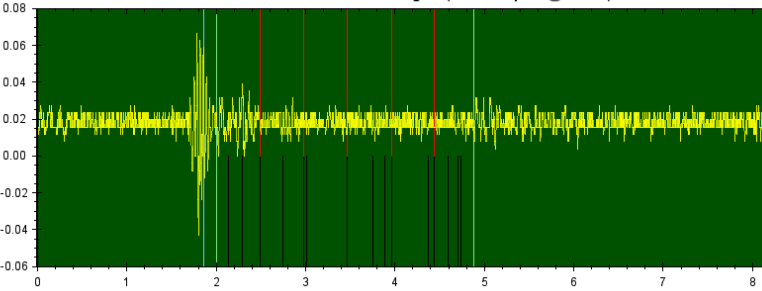The “GXN” is a DLITE-Family compatible 2-Channel R&D ultrasonic (UT) board with high channel-to-channel isolation. It is a mod for specific applications, and a prototype for future designs and revs.
This brief is about the channel-to-channel isolation on the GXN. A complete list of updated features will be available soon …
Compared with the “G”, the “GXN” provides a HUGE advantage in channel-to-channel isolation for applications using dual element transducers or channel-to-channel (“cross channel”) measurements where the receive (Rx) transducer is VERY close in space to the transmit (Tx) transducer – and thus the Rx waveform section of interest is close in time to the Tx waveform also. This is especially useful where high receive gains are needed.
See the waveforms below where transmit is on channel 1 and receive is on channel 2 which is unconnected.
Need more technical specs? Just get in touch.

The point: the above image Y-axis maxes out to the +/-5VDC Rx range with a gain of only *1* while in the image below for the GXN, the Y-axis covers a comparatively very small range and the Rx gain is MUCH higher at *8* which is 21dB higher receive gain than the gain used above for the G variant test. All other settings and configurations are the same.

So you can see how much more signal isolation there is in the GXN variant. To estimate a difference, there is around 20log(1V/0.1V) + 21dB = 41dB of difference (that is a lot) between the two variants. This matches the design total isolation of about 70dB for the GXN design variant, using the actual isolation from the source channel return voltages, which in the early DLITE family is at about 26dB.
Both boards and general design variants have appropriate applications and trade-offs for particular use cases.